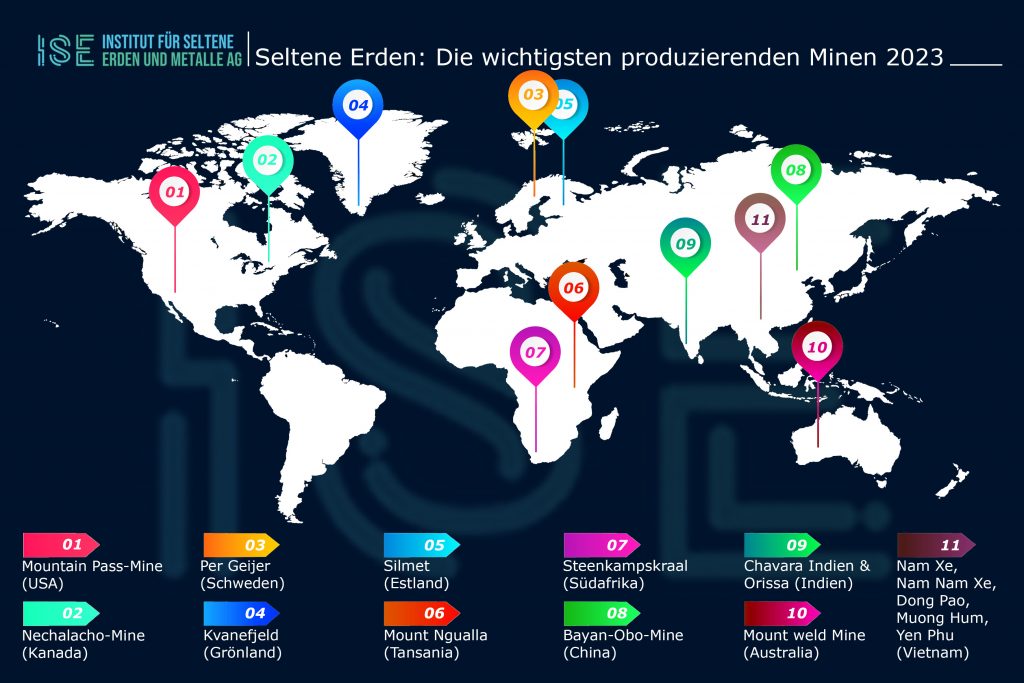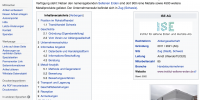The rare earth deficit debate was revisited after the Pentagon's last report to Congress. The result reports that US domestic rare earth shipments will adequately meet the needs of the US defense industry by 2013. The report was released regarding rare earth element (REE) needs for military vehicles, electronics and equipment including smart bombs, laser guidance systems, and night vision devices (The Rare Earths and Metals Institute reported). This report coincides with a period in which the industry has turned its attention to the upcoming World Trade Organization (WTO) investigation into China's rare earths export restrictions. President Obama's administration has encouraged the European Union and Japan to jointly attack China's export policy, which restricts rare earths exports to the West.
Request for investigation
In 2011, Congress asked the Pentagon to investigate certain aspects of the defense sector's reliance on rare earth elements. The investigations contained a fundamental analysis of the use of rare earths in materials for military applications and proposals to ensure long-term availability as well as methods for safeguarding, which represent a reliable source of supply until 2015. The unpublished seven-page report, entitled "Rare Earth Materials in Defense Applications," was sent to Congress last month. According to the report, the rare earth elements are widely used in military applications, but the armaments represent only a small fraction of US consumption. The country's needs could largely be met by domestic suppliers. The steadily increasing US supply of rare earths is increasingly able to match the consumption of the defense industry.
The answer from the Pentagon
In an email to the media, Cheryl Irwin, a Pentagon spokeswoman, said that the elements of the rare earths are important to the economy as a whole and not just isolated for the Department of Defense. The Pentagon also oversees the markets and prices of rare earth elements as well as other important commodities. According to the report, of the seventeen elements of the rare earths, the following six elements are to a large extent important for defense: dysprosium, erbium, europium, gadolinium, neodymium and praseodymium. The report also states that the element '' yttrium '', which is most commonly used in lasers, also becomes a scarce commodity in 2013. According to the US Geological Survey, China produced around 2011 of the world's delivered yttrium in 98.
Criticizing the results
Although it took over a year to produce the report, some industry experts disagree with the results. According to Ed Richardson, President of the US Magnetic Materials Association, and an expert on rare earth elements, the outlook is “quite naive” and poorly informed. He noted that even if US miners could find enough dysprosium and neodymium to produce magnets on a military level, the US would not have the manufacturing capacity to separate and refine the raw materials. "There are no companies in the United States that currently have the know-how," he said. In an interview with the Pittsburgh Tribune, Richardson and other experts stated that China and Japan are currently controlling the refining of rare earths. This would also be the case for the next few years, he added. In order to obtain the critical elements of the rare earths in the future, a way of cooperation with the Chinese must be found. In this case, the US would be the petitioner and would have to treat the Chinese with courtesy and friendliness instead of suing them at the WTO. Jack Lifton, co-founder of Technical Metals Research, a company in the US that deals with rare earths, claimed the only way we can maintain the SEE in the future is to cooperate with the Chinese. In the same discussion, the rare earths consultant Jeff Green pointed out in Washington that although several mining companies outside of China have discovered new deposits of rare earths and some have begun mining, almost all of them focus only on the Limited to light rare earths.
emergency plans
Brett Lambert, US Deputy Assistant Secretary of Defense, responsible for policy in the manufacturing industry, responded to the criticism: He stressed that the Department of Defense would intervene in the event of a shortage of rare earth elements. He said in an interview, "If we find any restrictions, we will think about activating various measures, including the emergency agreement". This emergency agreement allows the US defense industry to purchase the scarce materials on behalf of the Pentagon. Lambert stated that the current consumption of rare earth materials in the US defense industry is less than five percent of the national annual consumption. Also, even at the height of China's export restrictions in 2010, there was no evidence that arms companies were facing a shortage.
He points to the global market as a future source of rare earths and explains that the development of producers such as Molycorp Inc. (NYSE: MCP) in the US and Lynas Corp (ASX: LYC) in Australia is very positive. The report echoes the Pentagon’s forecast that factors such as increased mining capacity outside of China, falling rare earth prices since mid-2011, and lower forecasts for consumption in the western world are all factors that will result in a more stable SEE market through 2015 will lead.
solutions
The gap that the West must fill is less to seek for exploration of rare earths than to seek the know-how of how to separate the heavy rare earths from their carrier material. With the acquisition of Neo Materials, the US company Molycorp bought the know-how for 1,3 in April for separating the heavy rare earths from their carrier material. Neo Materials was the only Western company under the leadership of Alastair Neill to build a refinery north of Shanghai for the separation of light and heavy rare earths. Alastair Neill is currently working for another US rare earth company, Black Sea Metals Inc. (NASDAQ: BLAK). She has recently announced that she would build a refinery similar to the one in Shanghai in the Asian part of Turkey.
Every month, the rest of the world moves closer to China in the race for knowledge about the rare earths. Thus, the US, and also the EU with a lawsuit in the trade dispute with China before the WTO (world trade organization), trying to gain time. For example, in the period from 2007 to date, the US has conducted 73 commercial investigations against China. China, on the other hand, defends itself with arguments such as: The increasing environmental awareness of the Chinese is contrary to an increase in the production of rare earths, or the increasing demand of China for rare earths places the domestic use before the export.
But on the other hand, more and more high-tech products are being launched that require more and more rare earths. Unfortunately, these are usually the hard-to-reach HREE (Heavy Rare Earth Elements). Better and better LCD screens, increasingly effective wind turbines, solar panels, electric motors, computers, smartphones, etc. are driving the consumption of rare earths ever higher. If, as is to be expected, China converts from an SE exporter to an SE importer within the next five years, a supply gap will be inevitable despite increasing production in the West.
To the press release in PDF format
Source: Institute of Rare Earths and Metals eV / AU





